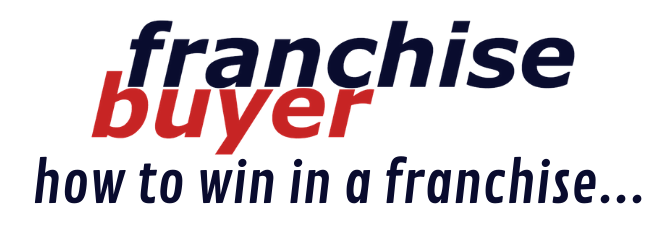February 27, 2019
Quick wins for your digital strategy
With digital marketing consultants and service providers hovering around you, it can be hard to see what is the best course of action to take. Here are some quick wins to help you identify where to focus first.

In its purest sense the term “digital strategy” is hugely broad, but when most people say it, they usually mean the marketing side of it. All the tools that you can use to put your name out there, attract leads and funnel them towards a sale.
For the purpose of this article I’m also going to stick to the marketing side as I step through a range of quick wins that you can consider when trying to create or revitalise a digital marketing strategy for your business.
Not all of these quick wins will apply to your situation, and if you’re really switched on then it’s probable that you already have many or all of these areas covered, however, this is a handy list of easy tweaks that you can make to close important gaps, and I see these gaps on a daily basis, even in big businesses with dedicated marketing resources.
Spruce up your products
The whole point of developing a digital marketing strategy is for you to attract new customers to your business. To do that you’ll need to be able to instantly engage a prospect and explain to them what products you have and why your products are better than others. Here are the mistakes you needto avoid.
Talking about your products
The very first thing you need to do is make sure you’re explaining your products the best way you can and usually you’re not the best judge, no one person is. You’ll have to test a range of different descriptions to see which ones bite.
Even in large businesses I often see products being poorly described to the market and often that’s caused by a discord between the product development team and the marketing team. Ironing that out and nailing your product descriptions is a huge win.
Displaying your products
In the digital age images are king, how do yours look?
If you’ve got product images taken on your travel camera with the built-in flash, flat focal length, or washed-out colours, you’re doing your business a massive disservice.
It’s very cost effective these days to get a professional photographer to help you take some professional- looking photos. Bear in mind that it’s not just about the technical aspects of photography, the art direction is just as important.

If you have a photographer coming to your premises you will need to make sure that you have every photo planned out, simple things like: n Is there a common treatment, filter or style that your photography should use? n What’s in the foreground of each shot?
- What’s in the background of each shot?
- Is there a person in the photo and if so, what are they doing, and what are they wearing?
- What time of day gives you the best light?
- Is everything clean and ready to be photographed?
With a couple of hours effort and a small amount of money you can transform the face of your products with photography and/or video that’s ready made for digital marketing channels.
Depending on your line of business, good photography can increase lead or sales conversion rates dramatically, not just 10% or 20%, sometimes it’s in the 100s.
Grabbing attention
To people that don’t know your brand, your products probably just look like everything else in the sea of options, they’re not as eye catching as you think they are.
To break through this type of same-same vibe perhaps try creating a bundle offer, something you don’t see too often.
For example, say you sell high- end hair care products, rather than offering just shampoo at $33/ bottle, why not create an offer for 10 bottles at $299. How many people by shampoo 10 bottles at a time? Not many I’d wager, but that offer looks different enough for someone to do a double take and think, who would want 10 bottles of this stuff? What is it exactly?
All you’re really trying to do is stand out long enough for someone to notice of your product, and in many cases they don’t end up buying the bundle, they simply buy your standalone product, which they wouldn’t have noticed before.
Re-engage customers and prospects
You’ve heard it a thousand times before, and it’s dead right, you’ll make a vastly higher margin when selling to your existing customers rather than selling to new customers.
Even when armed with that etched-in-stone rule of business, I frequently see clients that have no plan in place for re-engaging with their existing customers. Even when they do have a process in place they make the mistake of being lazy about it.

Here’s how you should look at it:
You need to keep good customer records and set up some method of getting back in touch with them at relatively regular intervals. Don’t send too much, and make sure it’s genuinely interesting, each unsubscribe is a lost asset to your business.
Given that they’ve purchased from you, make the effort to know something about them. How about dividing them into groups based on their preferences, such as those people that liked your premium range of products vs. those that liked your budget range. This is called “segmentation”. Use this information to make your communication more targeted and relevant.
Treat your existing customers like they’re already in the fold, don’t just give them the same offers that you’re giving to new customers.
Offering something a little different will make them feel a little more special.
So the quick win is definitely to re-engage with your existing customers, but you can also take a big step forward in your marketing by growing a database of prospects as well. A little further down I talk about stepping out into the traffic to grab some leads. When you do that you need to do more than just hope for a sale. You should be looking to earn their permission to communicate and collect some contact details for that purpose.
The easiest way to do that is by developing a “lead magnet”, which is a fancy name for putting together some useful information from your business or from the industry that you’re in and offering it to prospects on your website. Typically you will offer to send that information to them via email if they provide their email address.
By creating a lead magnet you’re establishing yourself as an expert in your industry, you’re collecting prospect details for ongoing marketing, and you’re increasing the ROI of your outbound marketing campaigns.
Stepping into the traffic
Let’s say that you have your products ready to roll and you’re confident that driving traffic to your website or a product landing page is going to convert into sales. At this point it’s all about increasing the number of prospects that see your product, you’ve got to step out into the traffic.
There are literally hundreds of places you can go to find traffic quickly, they all cost money of course. If you’ve been running a content strategy then it’s likely that you’ll also be getting some decent “organic” traffic from search engines and social channels, but if you’re looking at turning on the tap for some fast sales then you need to go to paid channels.
The two best places for sales conversions are typically Partner Channels and Search Engine Advertising. Let’s look at those.
Partner Channels
Most industries have a range of specialised channels dedicated to providing lead generation, for accommodation it would be Booking. com and Expedia. If these channels are actively driving traffic and they’re transactional i.e. you can make a purchase on them directly or they have a strong focus on lead capture, then they’re usually pretty good at showing quick results.
If the service is more of a directory that simply aims to list your details then it’s unlikely that you’ll see an uptick in leads any time soon.
When working with partner channels just be mindful of the ROI. Quick results usually come at a cost and you need to factor that cost into your equation. I personally don’t view that cost as a negative, after all they’re working hard to generate traffic for you and I view it as the digital version of office rent. If you want an office in a prominent location with high foot traffic then your rent will be higher.
That being said, I would encourage you to exercise caution when using discount sites for lead generation. Although it’s true that discount sites can generate a lot of traffic they often work as a double- edged sword by decreasing the perceived value of your product. If a customer buys your product at a 30% discount once then it’s incredibly unlikely that they’ll happily pay the full price the next time around.
Search Engine Marketing (SEM)
Search engines have been the golden child of digital advertising since Google took off like a rocket in the late 1990s. The biggest advantage search engines have is their crystal clear understanding of “buyer intent”. That is, when a prospect goes to a search engine they will type in something like “black school shoes” and from that moment on they are actively engaged in reviewing the results with a strong intent to review and possibly purchase a pair of black school shoes.
If you sell school shoes then you can get your product in front of those prospects very easily using pay-per-click (PPC) search engine marketing, and the biggest players are Google Adwords and Bing Ads. SEM in itself is a huge topic which I’ll have to tackle at another time, but here are some considerations when looking at advertising with search engines.
Search engines have buyer intent, the display networks and social networks do not.
Search engine ads need to be hyper-targeted to the keywords and prospect locations if you want to get good ROI.
Be very mindful of the text in your ads and where your ads are sending prospects once they click. You should try out several options for each ad to see what’s working.
Never set and forget, you need to monitor your ad performance regularly, particularly when reviewing the Max Cost Per Click (CPC) that you’re willing to pay.
Setup conversion tracking on your landing pages so you can see which ads actually result in a conversion action. Sometimes they’re not the ads that get the most clicks.
Hopefully this article has helped you uncover a couple of digital marketing quick wins for your business. All of the ideas described here can be executed in a matter of days with good potential for improvements in short term and long term results.
Of course a well-rounded digital marketing strategy will have several more components to it, many of which build value over the medium to long term, but as you can see, there are plenty of short term levers you can pull too.















